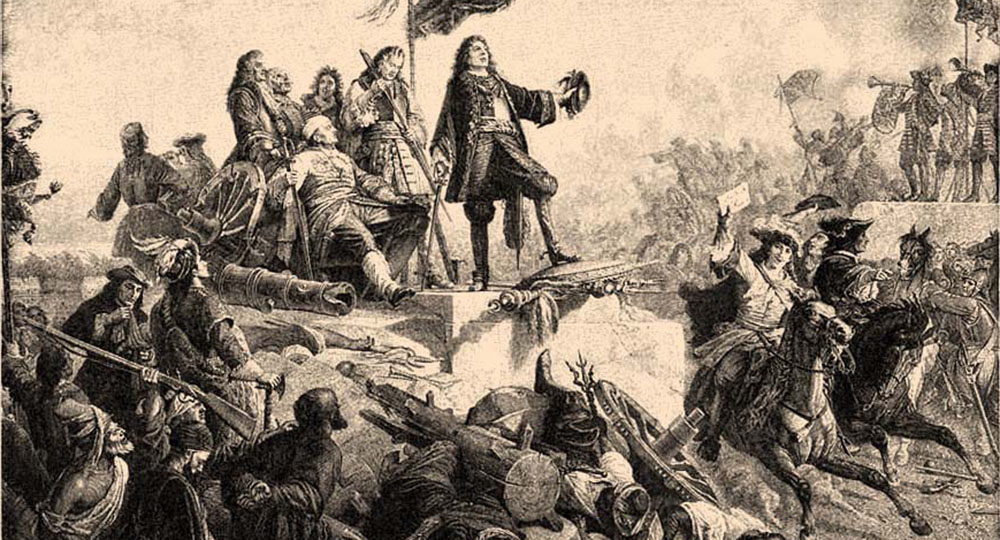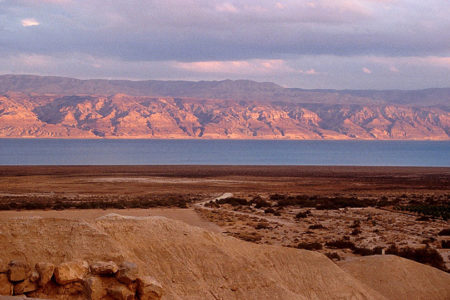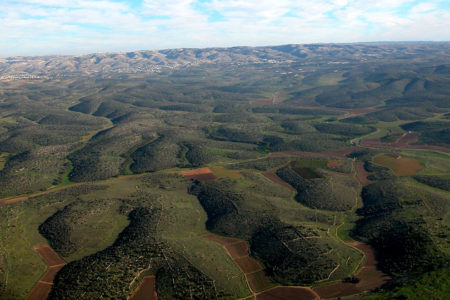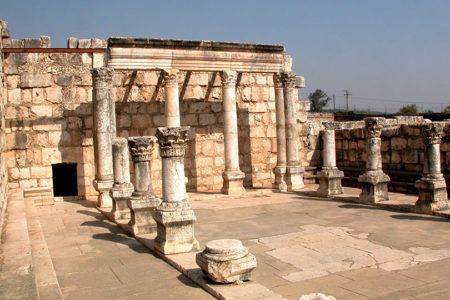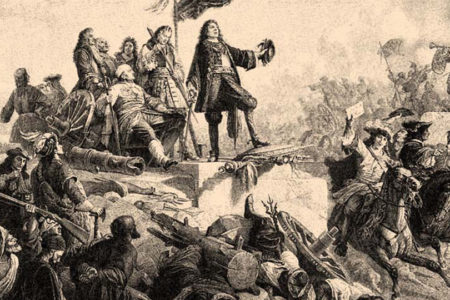The Ottoman Legacy
The Jewish people are in the Promised Land today as a result of divine decree and much blood, sweat, and tears. Despite today’s Arab propaganda that they “stole” the land from the Palestinians, the truth is that the Jews not only did not steal the land, but they legally purchased much of it from Muslim landlords who neither wanted or valued it. The Ottoman Turks raped and pillaged it, but Jewish pioneers brought it back to life. History shows the land only blooms when God’s people possess it.
The Ottoman Empire came into existence in the 13th century, and its influence fell on the Holy Land in 1516 when the Turkish Empire under Sultan Salim al-Yavuz routed the Mamluks, who had held dominion over it and Egypt since 1270.1
The Ottomans, who were Islamic but not Arab, divided the newest addition to their empire into four sanjaks (Turkish for “banners”).2 These were Jerusalem, Gaza, Nablus, and Safed. Each was an organizational, military, economic, and judicial entity.3 However, the land faired poorly under Ottoman rule:
The first three centuries of Ottoman rule isolated Palestine from outside influence….The Ottoman tax system was ruinous and did much to keep the land underdeveloped and the population small. When [historian] Alexander W. Kinglake crossed the Jordan in 1834-35, he used the Jordan’s only bridge, a survival from Roman antiquity.4
Yet, despite all types of hardship, a remnant of Jewish people always remained in the land.
Even after the Jewish state was ended by the Romans, Jewish communities continued to exist. All of the successor governments tried to eliminate the Jews at one time or another, but none succeeded as numerous accounts testify over the centuries. When the Zionists started the modern “return” to Eretz Yisrael in the 19th Century, they were joining Jews who never left.5
The Jews were persecuted mercilessly by the Turks and taxed at a rate equivalent to extortion. Joan Peters, in her outstanding book From Time Immemorial, quoted Christians who visited the important Jewish city of Safed in the 17th century. The Jews, they said, “pay for the very air they breathe.”6 Yet, wrote Ms. Peters, “at the turn of the century, the Jewish population had grown from 8,000–10,000 (in 1555) to between 20,000 and 30,000 souls.”7
But their plight was tragic due to the fact that all non-Muslims were officially tolerated (a second-class status called dhimmi) but were not considered equals. Therefore, the Jewish people had no rights or protection under Islamic law. Yet they could be taxed, humiliated, and even killed—as the majority of them were—by the cruel Muslims.
For example, in 1660 the Jews in Safed were massacred and the town destroyed, despite the staggering taxes the Jewish people were paying. In 1674, wrote Ms. Peters, “Jerusalem’s Jews were similarly impoverished by the oppression of the Turkish-Muslim rule.” She quoted Jesuit Father Michael Naud: “They [the Jews] prefer being prisoners in Jerusalem to enjoying the freedom they could acquire elsewhere….The love of the Jews for the Holy Land…is unbelievable.”8
A Jewish visitor in 1847 wrote:
They [the Jewish people] do not have any protection and are at the mercy of policemen and the pashas who treat them as they wish…their property is not at their disposal and they dare not complain about an injury for fear of the Arabs’ revenge. Their lives are precarious and subject to daily danger of death.9
A ‘Mournful Expanse’
When the famous American author and humorist Mark Twain visited in 1869, his description of the land under the Muslim Ottoman Turks was a far cry from a “land flowing with milk and honey”:
We traversed some miles of desolate country whose soil is rich enough, but is given over wholly to weeds—a silent, mournful expanse….Gray lizards, those heirs of ruin, of sepulchres and desolation, glided in and out among the rocks or lay still and sunned themselves. Where prosperity has reigned, and fallen; where glory has flamed, and gone out; where beauty has dwelt, and passed away; where gladness was, and sorrow is; where the pomp of life has been, and silence and death brood in its high places, there this reptile makes his home, and mocks at human vanity.10
In another chapter, Twain wrote:
There is not a solitary village throughout its whole extent—not for thirty miles in either direction. There are two or three small clusters of Bedouin tents, but not a single permanent habitation. One may ride ten miles, hereabouts, and not see ten human beings.
To this region one of the prophecies is applied: “I will bring the land into desolation; and your enemies which dwell therein shall be astonished at it. And I will scatter you among the heathen, and I will draw out a sword after you; and your land shall be desolate and your cities waste” [Lev. 26:32–33].
No man can stand here by deserted Ain Mellahah and say the prophecy has not been fulfilled.11
Indeed, ancient Israel’s disobedience brought desolation. But the land was not always so. The Bible describes the land given to Abraham, Isaac, and Jacob as “a good land and large land…a land flowing with milk and honey” (Ex. 3:8). God promised His people that, as long as they “obey the voice of the Lᴏʀᴅ [their] God, to observe carefully all His commandments,” they would be blessed (Dt. 28:1). He also warned that disobedience would lead to separation from the Promised Land and that the land itself would become desolate.
But God also promised restoration: “Israel shall blossom and bud, and fill the face of the world with fruit” (Isa. 27:6). God’s Word is explicit: The land of Israel will generate its bounty only when the people who have biblical title and ownership are in control. Otherwise, it will lie fallow, empty, and desolate.
In fact, the Jewish people have within them a natural and intense desire for the land of Israel and their beloved city, Jerusalem. The psalmist understood this unique, almost inexplicable, longing in the Jewish soul when he wrote, “If I forget you, O Jerusalem, let my right hand forget its skill” (Ps. 137:5).
The Muslim conquerors, on the other hand, had neither interest in nor love for the land they dominated. Despite Islamic ownership, the Arabs who lived there, wrote Peters, “had neither the desire nor experience for agricultural toil; they ‘heartily despised’ both the toil and ‘the tiller.’”12
Hal Lindsey, in his book The Everlasting Hatred, described the Promised Land under the Ottoman Turks:
The Holy Land under the Ottoman Turks suffered more devastation in four hundred years than the previous fifteen hundred. By the nineteenth century, the ancient canal and irrigation systems were destroyed. The land was barren and filled with malaria-ridden swamps. The hills were denuded of trees and brush so all of the terraces and topsoil had eroded away, leaving only rocks.13
Things were so bad that most Muslims were happy to sell their land to anyone who could afford the massive taxes. In 1901 the Jewish National Fund was established. It began collecting money from around the world, purchasing land from the Muslim usurpers, and making it available to the indigenous Jewish population and the many immigrants who wanted to make Palestine—their ancient Promised Land— their home again.
Golda Meir, who arrived as a pioneer with her husband in 1921 and eventually became prime minister of Israel, wrote:
The only people who could possibly undertake the job of draining the Emek [Jezreel Valley] swamps were the highly motivated pioneers of the Labour-Zionist movement, who were prepared to reclaim the land, however difficult the circumstances and regardless of the human cost. What’s more, they were prepared to do it themselves, rather than have the work done by hired Arab labourers under the supervision of Jewish farm managers.14
As Jewish people continued to make aliyah (Hebrew for “going up”) to Israel, their love of the land was evident. They took barren, desolate areas and installed irrigation systems. They cleared rocks and planted fields. They drained low, marshy, mosquito-infested swamps and turned them into fertile farmlands.
When, 40 years ago, the Israelis began moving into the barren Gush Katif area in the Gaza Strip, they were told by the Arabs that the land was cursed and nothing could be grown there. But by the time the Israelis were forced to leave last summer under the government’s disengagement policy, they had turned Gush Katif into the breadbasket of the land of Israel. They did what they have always done: They made the desert bloom.
The Muslim Ottoman Turks left a legacy of desolation. But God had promised that the land would be desolate until His people—the children of Abraham, Isaac, and Jacob—returned to it:
Thus says the Lord Gᴏᴅ: “Because they made you desolate and swallowed you up on every side, so that you became the possession of the rest of the nations,…who gave My land to themselves as a possession, with wholehearted joy and spiteful minds, in order to plunder its open country…prophesy concerning the land of Israel, and say…‘I have raised My hand in an oath that surely the nations that are around you shall bear their own shame. But you, O mountains of Israel, you shall shoot forth your branches and yield your fruit to My people Israel’” (Ezek. 36:3, 5–8).
Despite the prevailing, anti-Semitic worldview regarding Israel, Scripture is clear: The Sovereign God of the universe created the heavens and the earth (Gen. 1:1). He also created the Jewish people, a nation that had never before existed. And He promised them a piece of real estate located literally in the center of the world. Israel is a Promised Land for a Chosen People; the relationship is symbiotic. They exist as separate entities, but only together are they able to realize fully all the Lord God has promised.
ENDNOTES
- Hal Lindsey, The Everlasting Hatred: The Roots of Jihad (Murrietta, Calif.: Oracle House, 2002), 163.
- <http://en.wikipedia.org/wiki/Sanjak>, s.v. “sanjak.”
- Haim Z’ew Hirschberg, “Israel, Land of: History,” Encyclopaedia Judaica, CD-Rom edition, 1997.
- “Early History, Palestine History” <www.palestinefacts.org/pf_early_palestine_brief_history.php>.
- Ibid.
- Joan Peters, From Time Immemorial (1984; reprint, Chicago: J. Kap Publishing, 1993), 178.
- Ibid.
- Ibid., 178–179.
- Ibid., 190–191.
- Mark Twain, Innocents Abroad, Electronic Text Center, University of Virginia Library, chap. 47 <etext.lib.virginia.edu/etcbin/toccer-new2?id=TwaInno.sgm&images=images/modeng&data=/texts/english/modeng/parsed&tag=public&part=47&division= div1>, 489.
- Twain, chap. 46 <etext.lib.virginia.edu/etcbin/toccer-new2?id=TwaInno.sgm&images=images/modeng&data=/texts/english/modeng/parsed&tag= public&part=46&division=div1>, 485.
- Ibid., 151.
- Lindsey, 167.
- Golda Meir, My Life (London: Futura Publications, 1976), 63.
